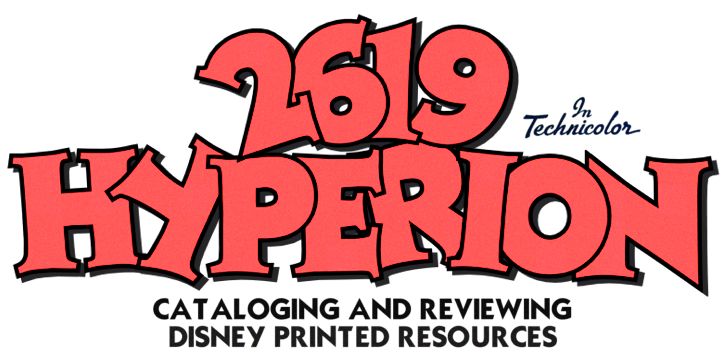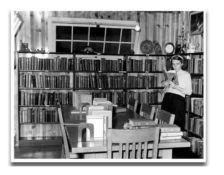 I have long celebrated and chronicled Disney-related futurism here at 2719 Hyperion. Connecting the Disney dots between the 1939 World's Fair, the Tomorrowland television episodes and ultimately Walt Disney's own vision of the future embodied in his plans for EPCOT, has been one of my more consistent passions over the past couple of decades. And it is also a passion that extends beyond Disney relevance; I continue to be fascinated and intrigued by the nostalgic futurism that became a significant part of 20th century popular culture.
I have long celebrated and chronicled Disney-related futurism here at 2719 Hyperion. Connecting the Disney dots between the 1939 World's Fair, the Tomorrowland television episodes and ultimately Walt Disney's own vision of the future embodied in his plans for EPCOT, has been one of my more consistent passions over the past couple of decades. And it is also a passion that extends beyond Disney relevance; I continue to be fascinated and intrigued by the nostalgic futurism that became a significant part of 20th century popular culture. So it is in these contexts that I experienced such joy and excitement upon discovering Brian Fies' wonderful graphic novel Whatever Happened to the World of Tomorrow?
So it is in these contexts that I experienced such joy and excitement upon discovering Brian Fies' wonderful graphic novel Whatever Happened to the World of Tomorrow?Fies tells the story of a father and son who enthusiastically visit the 1939 New York World's Fair, and are introduced to The World of Tomorrow--television, Elektro the robot, Futurama--just to name a few of its many wonders. Buddy and Pop readily embrace the Fair's idealistic message; Buddy through the wide-eyed wonder of a child, his father through a more grounded view of the necessity of hard work and intelligence.
Fies then employs an odd yet ultimately ingenious storytelling device. Each chapter of the story takes place in a subsequent decade, progressing through the 1940s, 1950s, 1960s and 1970s. These chapters continue the story of Buddy and Pop as they witness the evolution of the World of Tomorrow, but the pair age slower than the passage of time. Buddy begins in 1939 as a young boy of ten or so, but by 1975 is still a teenager straining at the boundaries of their father-son dynamic. All the ideals, hopes and dreams of three separate generations become encapsulated in Buddy and Pop's time-displaced half century journey.
Accompanying each of these chapters is a mock comic book that features the adventures of Commander Cap Crater and his young sidekick, the Cosmic Kid. These two characters are thinly vieled four-color incarnations of Buddy and Pop, and similarly journey through the decades, with each era's comic book brilliantly reflecting that time frame's comic book culture. The publisher creatively delivers these pages via halftone-dot newsprint.
 Walt Disney is mentioned throughout, most prominently during the 1955 chapter where Fies correctly gives the Disneyland television program its due for bringing the notion of space exploration prominently into the public eye. Disney's death, and his unrealized dream of EPCOT is mentioned in the 1975 chapter, a vignette that summarizes the cynicism and cultural failures that ultimately squelched much of the forward thinking idealism that Buddy and Pop had previously embraced. Similarly, Commander Cap Crater retires his comic book when confronted with a reality that undermines the very principles of a brave and noble journey into the future.
Walt Disney is mentioned throughout, most prominently during the 1955 chapter where Fies correctly gives the Disneyland television program its due for bringing the notion of space exploration prominently into the public eye. Disney's death, and his unrealized dream of EPCOT is mentioned in the 1975 chapter, a vignette that summarizes the cynicism and cultural failures that ultimately squelched much of the forward thinking idealism that Buddy and Pop had previously embraced. Similarly, Commander Cap Crater retires his comic book when confronted with a reality that undermines the very principles of a brave and noble journey into the future.But Fies does not dwell on futures lost. His concluding chapter jumps to a not-too-distant future that is both idealistic and realistic, bringing Whatever Happened to the World of Tomorrow? to both a happy and satisfying conclusion.
If Disney's original EPCOT film gave you goosebumps, or if you ever emerged excited and energized after riding Spaceship Earth or Horizons at EPCOT Center, you will no doubt be similarly thrilled and motivated by Brian Fies amazing journey across the 20th century. It is a hopeful, happy vision, and one I intend to revisit many times in my own world of tomorrow.




0 comments:
Post a Comment